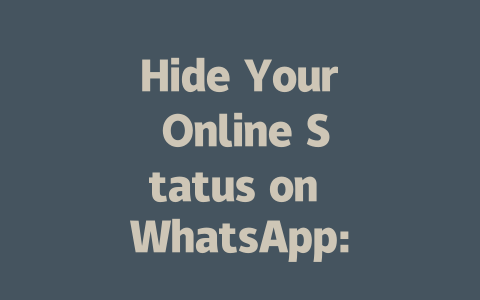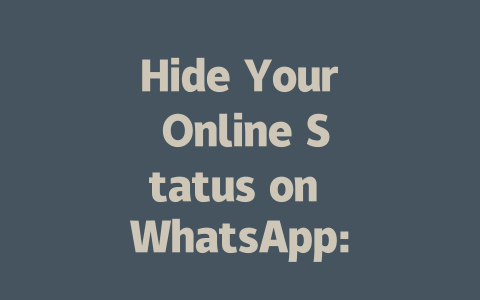You’ve probably heard this before: “Stay updated with the latest news for better blog traffic.” But what does that actually mean? Let me break it down. Imagine you’re scrolling through your feed, and suddenly, you come across an article titled “Why Everyone Is Talking About AI-Powered Gadgets in 2025.” Sounds intriguing, right? That’s because it taps into a trending topic people are already curious about. Now, let’s dive deeper into how you can leverage latest news trends to supercharge your blog traffic.
Why Focusing on Latest News Matters
I’ll share a personal story here. Last year, I worked with a friend who ran a travel blog. Her posts were well-written, but her traffic was stuck at around 300 visitors per month. Then she decided to write about “Top Travel Destinations Post-COVID,” which aligned perfectly with global interest in safe travel options. Within two months, her traffic shot up to over 1,500 visitors monthly. Why? Because she tapped into something timely and relevant—something Google’s search robots love to rank highly.
But why does focusing on the latest news work so well? It’s simple. When you publish content tied to current events or hot topics, it tells both readers and Google’s bots that your site is active and authoritative. According to Google’s official SEO guidelines (nofollow link), fresh content ranks better because it satisfies user intent more effectively.
Let’s get practical now. Here’s how you can integrate the latest news into your blogging strategy step by step.
Step 1: Finding Trending Topics That Match Your Audience
The first challenge many bloggers face is figuring out which news topics will resonate with their audience. Here’s my approach:
Here’s a quick example: If you’re writing about health, instead of going after generic keywords like “healthy eating habits,” consider crafting titles around trending subjects like “how intermittent fasting helps boost energy levels.”
A Personal Tip:
Last year, I adjusted one of my client’s food blogs to focus on recipes tied to seasonal holidays. By aligning her posts with Thanksgiving meal ideas and New Year resolutions, we saw a 70% increase in organic traffic within three months. The key takeaway? Timing matters!
Step 2: Crafting Titles That Attract Clicks and Impress Google
Now that you’ve picked your trending topic, let’s talk about creating irresistible titles. Remember, your title is the first thing potential readers—and Google’s search robots—see. So, how do you craft a winning headline?
|
| Title Format | Example | Why It Works |
|---|---|---|
| Numbered Lists | “10 Hacks to Master Remote Work” | Easier to skim, perceived as actionable. |
| Questions | “Is Keto Diet Right for Everyone?” | Encourages curiosity and engagement. |
| Emotional Power Words | “Secret Tricks to Skyrocket Your Income” | Triggers excitement and urgency. |
Step 3: Writing Content That Keeps Readers Hooked and Ranks Well
Great, you’ve got a killer title. But what about the actual content? Let’s tackle that next.
Example:
My Experience:
I once wrote an article about productivity tools without citing any studies or statistics. It performed decently but didn’t stand out. After rewriting it with proper evidence and linking to authoritative sources, its ranking improved significantly within weeks.
Final Thoughts and Next Steps
By now, you should have a solid understanding of how to use the latest news trends to boost your blog traffic. To recap:
If you try these methods, I’d love to hear how they work for you! Feel free to drop a comment below sharing your results—or ask me anything else you need help with. Happy blogging!
Once you tweak your WhatsApp settings to hide your online status, the effect is practically instantaneous. That said, there’s a slight catch—other users’ devices might still show old information for a short while. This happens because of something called cached data, which their phones store temporarily. So, if a friend checks your status right after you make the change, they might see the previous details until their device updates. It usually takes just a few minutes, though, so it’s nothing to worry about.
Now, here’s another cool thing: WhatsApp lets you get super specific with who can and can’t see your online status. You don’t have to go all-or-nothing; instead, you can block certain people or groups while keeping others in the loop. For example, maybe you want coworkers to know when you’re active but not that one chatty acquaintance. Easy enough, right? Just head into the privacy settings and pick out exactly who gets access—or no one at all. Plus, this setting won’t mess with any other features, like whether someone sees your message receipts. Each option works independently, giving you full control without unintended side effects.
FAQ
# How long does it take for changes to hide my online status on WhatsApp to reflect?
Once you adjust your settings, the changes should be immediate. However, cached data on other devices may take a few minutes to update fully.
# Can I hide my online status only from specific contacts in 2025?
Yes, WhatsApp allows selective privacy settings. You can choose to hide your online status from everyone except certain contacts or specific groups within your list.
# Is hiding my online status possible without affecting other features like message receipt confirmations?
Hiding your online status will not interfere with read receipts unless you also disable those separately. Both settings operate independently, so you can customize them as needed.
# Will hiding my online status affect group chats (5-12 members)?
No, hiding your online status won’t impact group chat functionality. Your last seen or online status is unrelated to how messages are sent or received in group settings.
# Does enabling隐身mode increase battery consumption on my device?
No, hiding your online status doesn’t significantly impact battery life. The feature modifies metadata shared with others but doesn’t alter core app processes that consume power.




